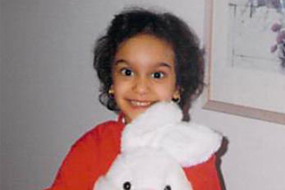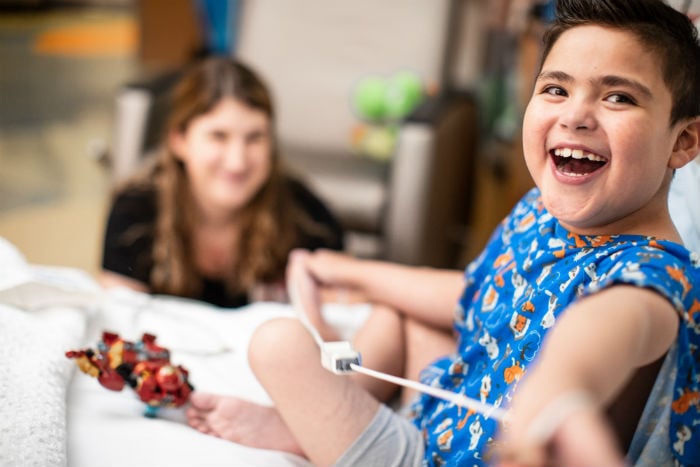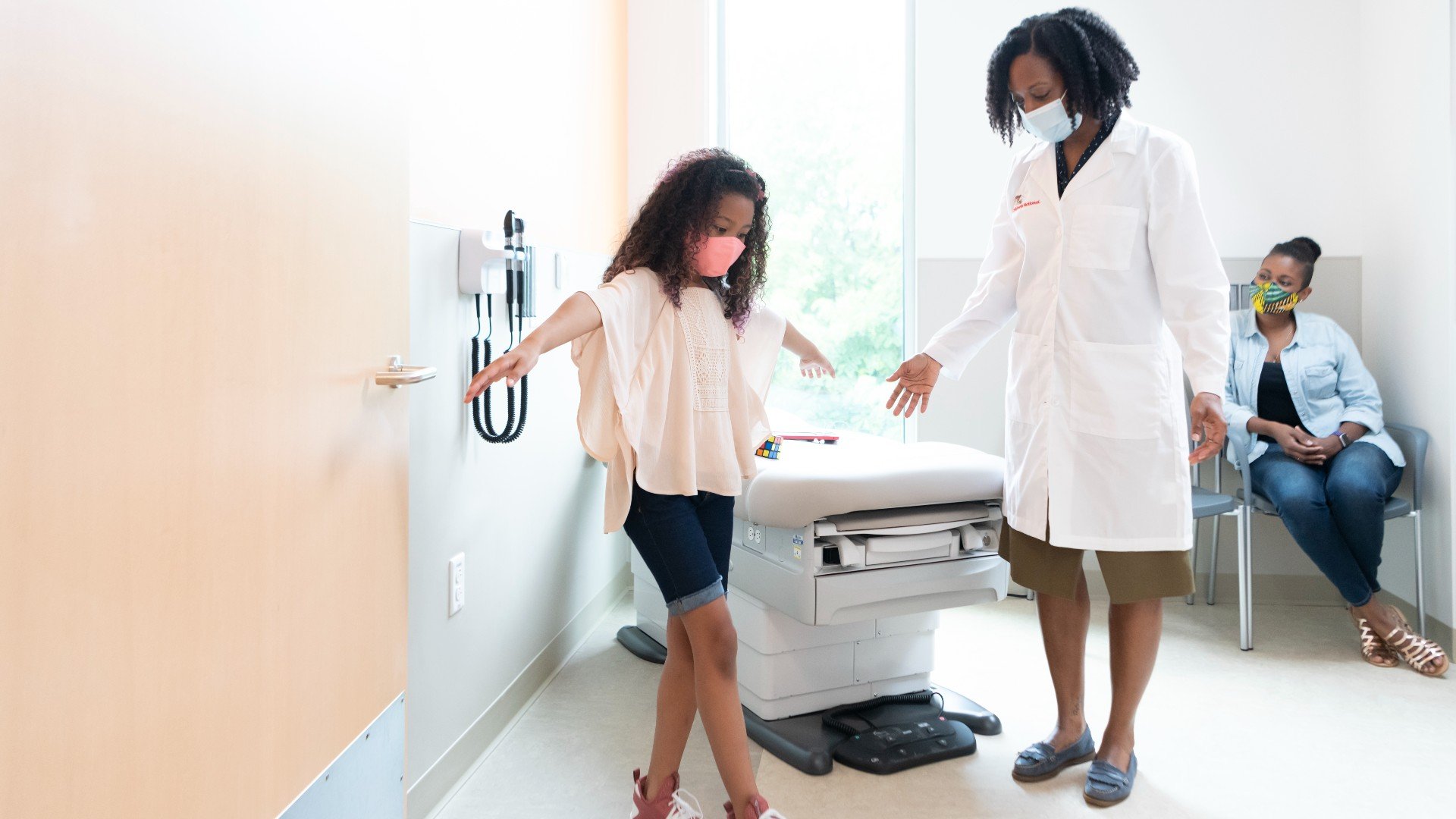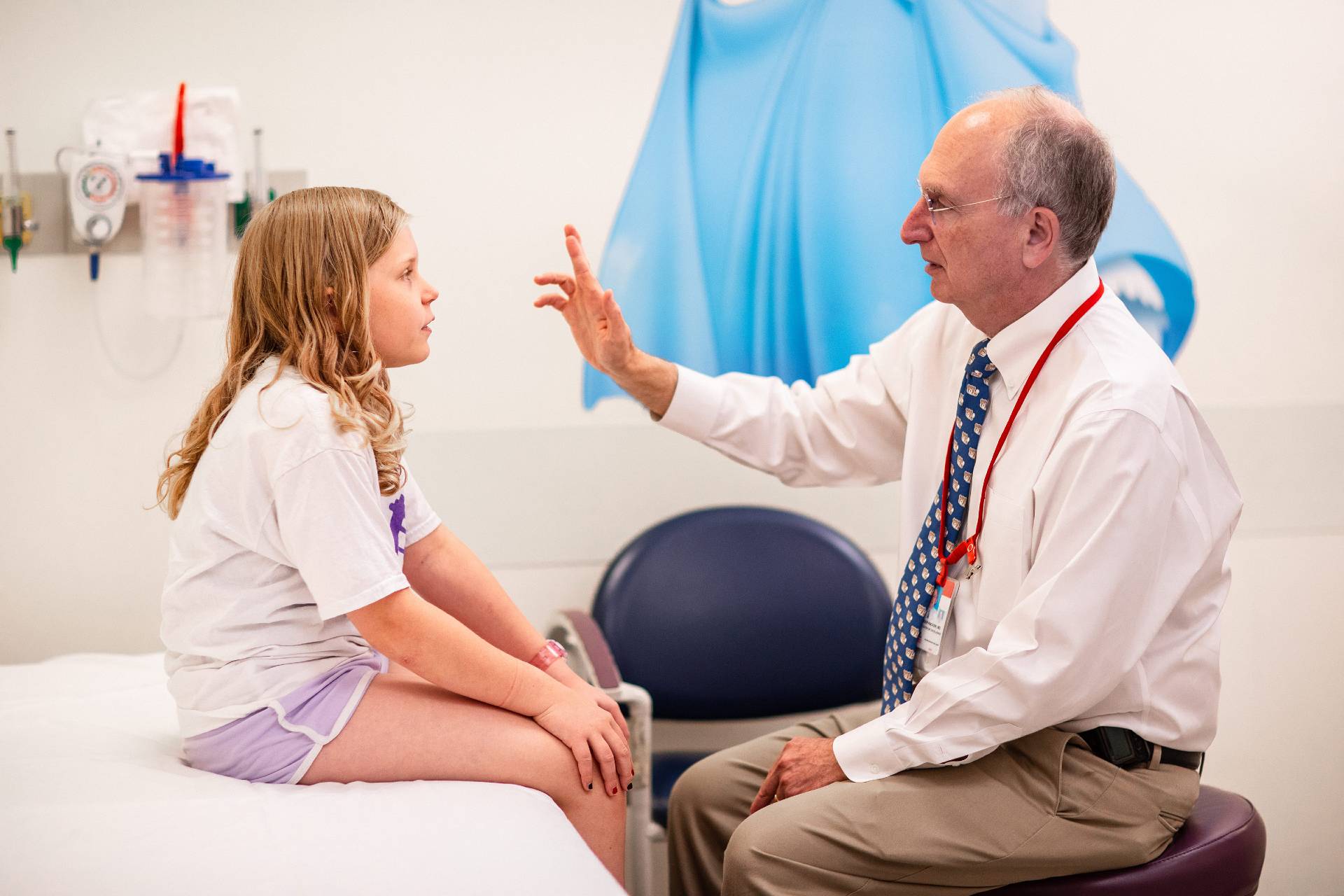Condition
Pediatric Neurofibromatosis
Neurofibromatosis (NF1) is a life-long condition usually diagnosed early in life, often within the first year. NF1 is diagnosed based on specific skin, ocular, and other physical findings, and genetic blood testing in selected cases. Half of all children who have NF inherited the disease from an affected parent, while the other half has no family history, meaning that the disease occurs spontaneously.
NF1 occurs once in approximately 3,500 births and is characterized by:
- Multiple café au lait (light brown) spots
- Neurofibromas (benign tumors growing on the sheath of a nerve) on or under the skin
- Enlargement and deformation of bones and curvature of the spine (scoliosis)
- Tumors that may develop in the brain, on cranial nerves, or in the spinal cord
- Learning disabilities, in about half of people with NF1
Although NF1 is a congenital (present at birth) condition, the full extent of the disease is usually revealed only as a child grows and develops. More than 95% of children with NF1 develop multiple café au lait spots. Young children with multiple cafe-au lait spots and no other NF1 features, whose parents do not show signs of NF1, are still at risk of having NF1. For many children, other aspects of NF1 can increase with age.
Frequently Asked Questions
Caring for neurofibromatosis patients
What are some complications associated with neurofibromatosis in children?
What is the diagnosis and treatment of neurofibromatosis type 2 in children?
Daniel's Story: Seeking International Expertise in Neurofibromatosis Type 1

Daniel's neurofibromatosis diagnosis had an added complication of scoliosis. Learn more about what led his family to travel from Peru to the United States to seek expert treatment at Children's National Hospital.
Meet the Providers Who Treat Neurofibromatosis
Patient Stories
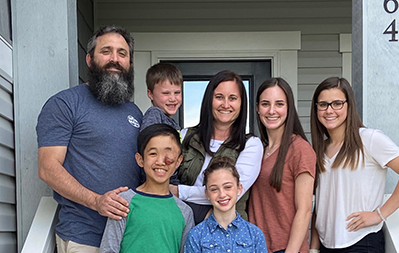 Maddox's Story: A Fresh Start With Love and the Right Care
Maddox's Story: A Fresh Start With Love and the Right CareZhen Chao, now called Maddox, was born in China with a genetic condition called neurofibromatosis type 1 (NF1) that can cause painful or disfiguring tumors called plexiform neurofibromas. Read about Maddox.
Departments that Treat Neurofibromatosis
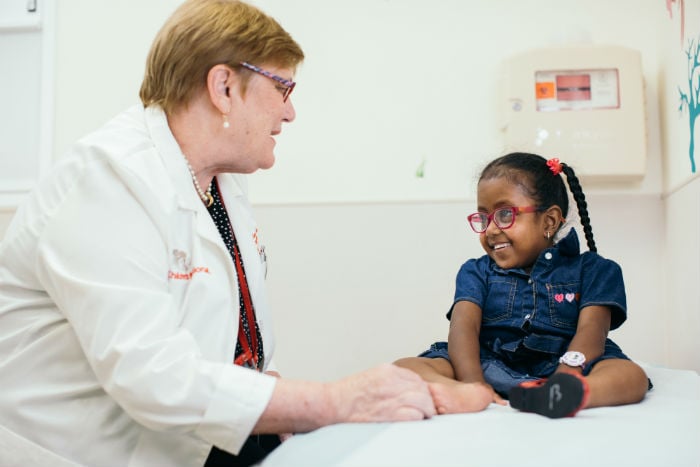
Bone Health Program
Orthopaedists at Children's National offer world-renowned expertise and life-changing care, including surgery, for children at high risk for bone fracture.





